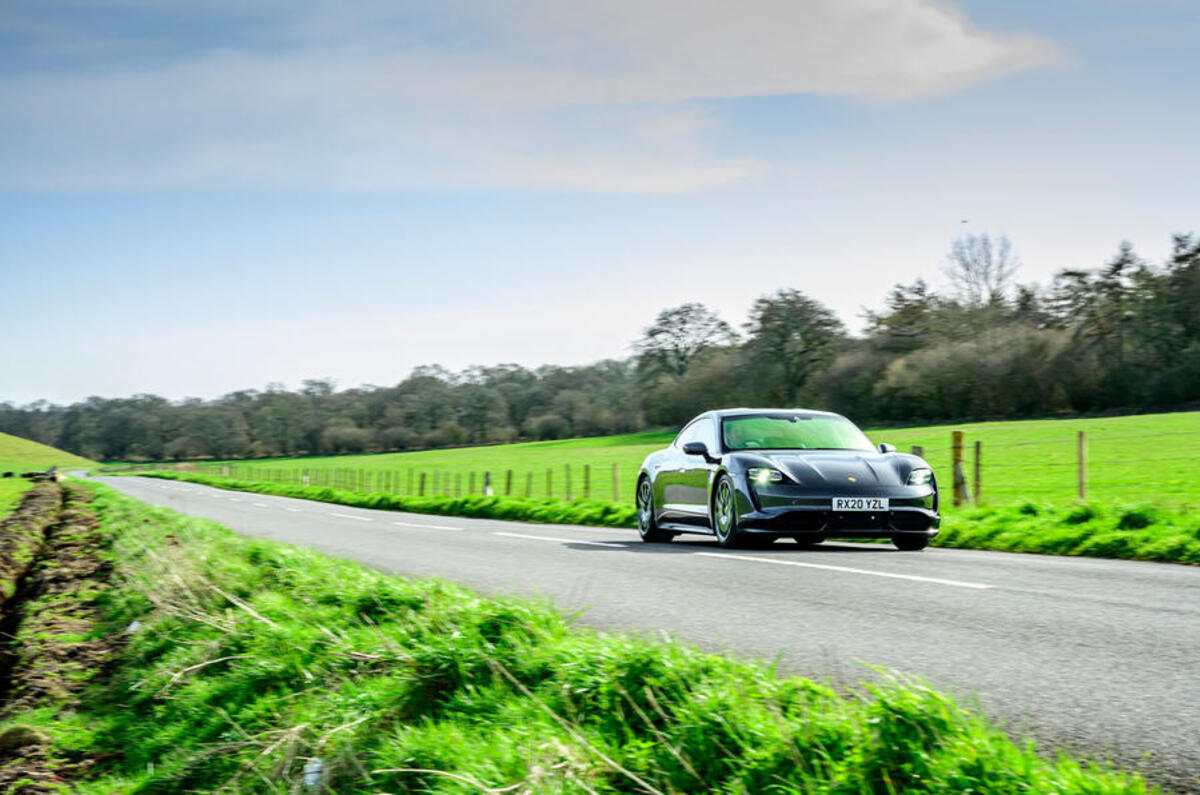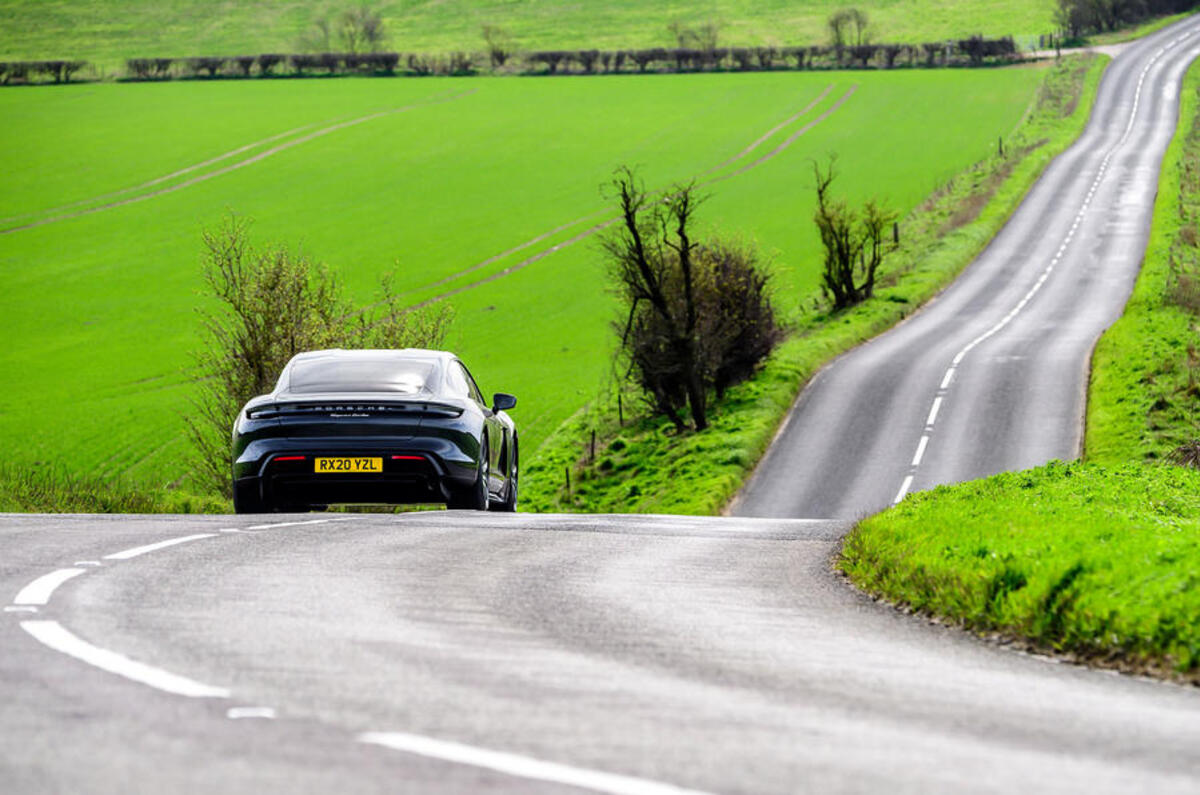The acceleration is so relentless and instant - particularly from a launch, but at any speed and in any situation - that it concerns me somebody with nothing more than a healthy bank account and a driving licence can get hold of one. Yet the Taycan is barely the tip of the iceberg. Think about Rimac’s work in taking EVs well beyond 1000bhp. And then think about the 1900bhp Pininfarina Battista. And then the 1973bhp Lotus Evija. Making an EV generate numbers that were beyond all logic only a few years ago seems too easy.
I’m aware I’m staggering down a well-trodden path here, but what possible use is 1973bhp in a two-seater in any road situation? One slip of the foot, one tiny misguided moment of showing off, and you’re either at three-figure speeds or ploughing into whatever was 100m away three seconds ago.
Such a prospect would even be daunting on some of the UK’s smaller circuits. And anyway, would you want to take your near £2 million hypercar to Brands Hatch only to stuff it on the third lap due to the mind-scrambling straight-line speeds outpacing your braking timing, or make it another handful of laps before the battery has less charge in it than your phone?
As has been the case for years, these cars exist primarily for bragging rights or for those who simply must have the ‘ultimate’ thing. They are at their best on a deserted airfield. Fine, they have a purpose, albeit a narrowly defined and niche one. But we’ve been banging this drum for as long as I can remember: speed and fun are often not directly linked. In fact, beyond a certain point the more of the former a car is capable of, the less chance there is of the latter being sustainable on the road.
Porsche, I think, gets this. The 911 is often at its most engaging in its slowest spec, and I suspect that, were it not for the existence of Tesla’s stomach-churning Performance Tesla Model S, the Turbo and Turbo S Porsche Taycans would not have been made the priority at the model's launch.
More often than not, it’s when approaching a car’s limits (either by chucking it into a bend or spinning the engine as fast as it will allow) that it starts to really come alive and give you a sense of involvement that lasts far longer, and gets old far less quickly, than a sub-3.0sec 0-62mph launch. And with the traction and chassis composure necessary to keep a mega-quick EV in check, hitting that sweet spot is becoming harder than ever on British roads.
It's for this reason that I think the Taycan is a superb piece of engineering. But I really can't wait to see what Porsche do with a small, light and not over-endowed Boxster EV.
READ MORE
Matt Prior: how much power is too much?
Steve Cropley: small and simple is the formula for driving nirvana
The best slow cars to drive fast










Join the debate
Add your comment
How fast is too fast?
I have some sympathy with this, but it also feels like finding another reason to bash EVs. For years, ICE manufacturers have been selling 500bhp RWD saloons, dating back to the 2003 Mercedes E55 AMG. These have even less point in the UK than an electric hypercar because they aren't that fast at real world (i.e. below 70mph) speeds because the rear wheels are spinning - you don't get that many warm, dry days in the UK! They have eye-widening performance from 70mph up to 155mph (or higher if de-limited), but what use is that when you don't have an autobahn?
At least electric cars like the Taycan and Teslas have practically useful performance - you can pull out into a short gap in traffic and get up to speed very quickly, or do a 35-60mph overtake in perfect safety. As daily drivers, they simply make more sense than their competitors unless you are doing 200+ mile trips on a weekly basis.
I agree that a cheap(ish) light(ish) Boxster EV with a 75KWh battery and a 250m range would be a lovely thing and that will come as battery technology improves.
Halo
Halo models omly really make sense as test beds for tech that will eventually trickle down to mainstream models. As production volumes ramp up, prices will come down, and as, in the case of battery tech, weight as well as costs should become more competitive.
Wrong direction
This has been a constant source of frustration for me. The focus for electric sports cars should be on efficiency and in using engineering excellence, intelligent design and new materials and technology to overcome the current barriers of energy density and range, to develop true alternatives to ICE rather than unaffordable (for most of us) 5 and 6 figure behemothsThe current approach to sports/super/hypercar development appears to be solely targeting power I.e. taking the easy route, which is especially difficult to swallow from Lotus and goes against their longstanding ethos, albeit that it does appear to be significantly less heavy than the competition. Don't get me wrong, it looks like an amazing piece of kit, but to me, against the wrong brief.But perhaps this is, in the short term at least, a direction dictated by business needs and my hope is that these are gateways to future, more practical and affordable EV sports cars, having generated significant profit and kudos from a few hundred x £2m HyperCars.
Suggested Targets
1250kg
200kw
150 mile range minimum 'real world range' at 0 degrees C
Wacka,
Wacka,
Your line of thinking is why the legacy manufacturers got their backsides kicked.
While it is massive technical achievement to develop EVs to the point where they are straight out better cars than ICE vehicles the real achievement was plotting the route through the automotive market.
If Tesla had tried to build practical electric cars they would have produced some city car box, however it would have cost £100k and nobody would have bought it. A sports car on the other hand can hide a £50k first generation battery pack pretty easily.
Most of the weight of EVs comes from requirements for modern crash protection, noise insulation, comfort and features. A premium EV is only 5-10% heavier than an equivilent ICE vehicle.
Once you have the massive battery required for range the marginal cost (in weight, cost or range) of increasing the motor size for massive performance is actually pretty low. However the additonal price you can sell it at is much higher.
Exactly
The premium EVs have to compensate range for performance over their ICE competition (remember, the moneyed class buying these are not necessarily the intelligent class). A few high profile overpaid footballers crashing into bus queues will soon mean some appropriate government legislation (>300 bhp requires and advanced drivers license or similar...).